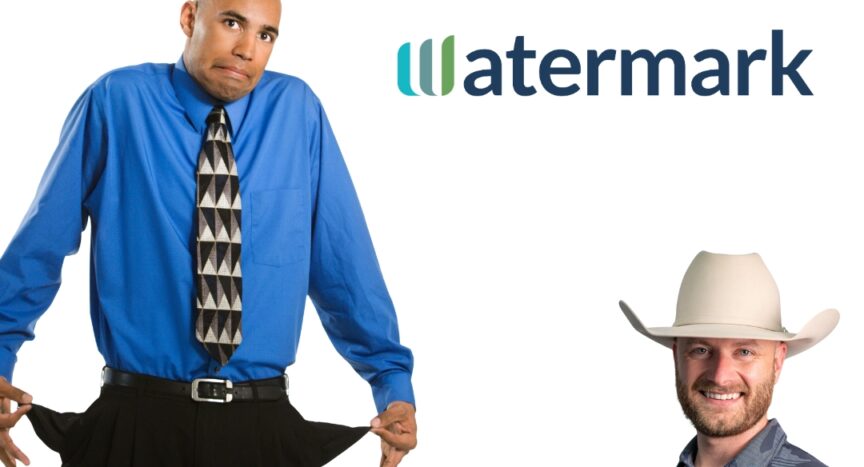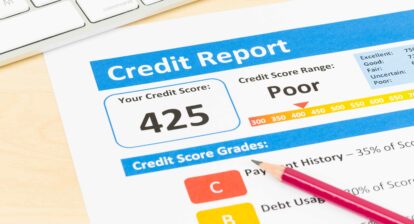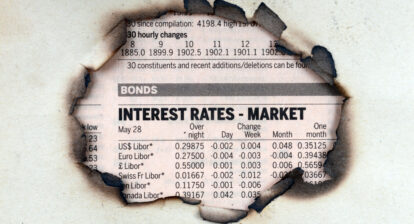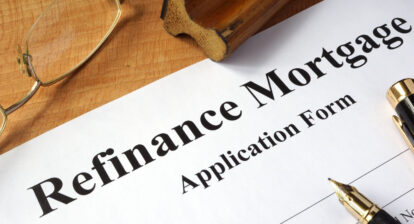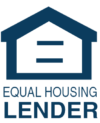For many homebuyers, the notion of a mandatory 20% down payment on a conventional loan can be discouraging. This belief often stems from decades-old financial misunderstandings surrounding conventional mortgage loans. However, the landscape of conforming loans has evolved, and it’s essential to decipher these myths to understand modern mortgage options truly. Does a conventional loan require 20% down?
Today we’ll look at how different down payments affect mortgage parts like Private Mortgage Insurance (PMI) and monthly payments. We will also consider credit scores and debt-to-income ratios.
We’ll weigh the pros and cons of lower down payments and discuss their implications for first-time buyers. We’ll compare conventional loans with government-backed loans like FHA and VA. This helps you understand the choices when getting a mortgage.
The 20% Down Payment Myth
Many people still believe that 20% down is required to get a conventional loan; however, this is not true for modern mortgages. Lenders now offer conventional loans with down payments as low as 3%, provided that you have a strong credit score. Putting 20% down can help in the long run. It removes PMI and gets better interest rates. But it is not required anymore. A 10% down payment is also a good choice for building home equity without breaking the bank, because you can get a better interest rate.
Historical Context and Common Misconceptions
The notion that a 20% down payment is necessary for a conventional loan is a long-standing myth. It largely comes from the benefits it offers, such as avoiding PMI and locking in favorable interest rates. Originally, lenders required larger down payments to reduce their risk. This led many to assume that it was the only way to get a home loan. With changes in lending practices, this is no longer the case.
In recent years, the lending industry has adapted to the needs of more borrowers. Fannie Mae and Freddie Mac programs now allow people with good credit scores to put down as little as 3%. However, the advantages of a 20% down payment, like skipping PMI and potentially lower interest rates, keep the myth alive.
Many loan programs now offer flexibility and lower down payment options, but some people still hold onto outdated beliefs. These evolving standards show how conforming loans are adjusting to make homeownership more accessible. This flexibility showcases the variety of loan options available today, helping more individuals achieve their dreams of owning a home.
Understanding Down Payment Options
Conventional loans are common loan products for homebuyers. And as mentioned, many people think that buying a home with a conventional loan means putting down at least 20% of the purchase price. However, that’s not the case. In fact, conforming loans can require smaller down payments than an FHA loan under certain programs, such as the Conventional 97 program. Understanding the initial and long-term costs, including mortgage insurance, is the key to making informed decisions.
Options Lower than 20%
Not everyone needs to save up a 20% down payment for a conventional loan. Programs like the Conventional 97 allow borrowers to put down as little as 3% (versus 3.5% on an FHA loan.) This option is particularly appealing to first-time homebuyers who may not have substantial savings. Even with a small down payment, conventional loans can be good. They may cost less over time than some government-backed loans. However, having a smaller down payment means that private mortgage insurance, or PMI, is usually required.
When the down payment is less than 20% (a loan-to-value ratio of greater than 80), lenders generally add PMI fees to the monthly mortgage payment. While PMI increases monthly costs, it ensures that lenders are protected if a borrower defaults on their loan. Despite this added cost, about 75% of first-time homebuyers choose down payments under 20%.
PMI is not permanent. Once a homeowner achieves 20% equity in their home, they can usually cancel their PMI.

Impact of Down Payment on Mortgage Components
A significant down payment can greatly affect the components of a conventional mortgage loan. When you pay at least 20% of the home’s purchase price upfront, the benefits go beyond lowering the loan amount. This substantial payment eliminates the need for private mortgage insurance (PMI), reducing long-term costs. A larger down payment can improve the terms of the mortgage and decrease interest payments over time.
Private Mortgage Insurance (PMI)
Private mortgage insurance, or PMI, is often required for conforming conventional loans with down payments less than 20%. This insurance protects private lenders if a borrower defaults on their mortgage loan. Although PMI benefits the lender, the borrower is responsible for the monthly premium payment. Many homeowners see PMI as an added expense. However, once a homeowner gains 20% equity, PMI can be removed, leading to lower monthly payments.
Understanding PMI’s monthly premium is crucial when opting for a smaller down payment. It is essential to weigh the overall costs and savings. PMI applies even during refinancing if equity remains below 20%. So, budgeting for these costs upfront can prepare you for the eventual shift to lower monthly payments.
Monthly Mortgage Payments
Monthly mortgage payments vary considerably with different down payments on conventional loans. If your down payment is less than 20%, you’ll find that monthly payments include private mortgage insurance premiums. Again, once you reach sufficient equity and remove PMI, your financial burden will ease. Interest rates affect monthly costs. Fixed-rate and adjustable-rate mortgages (ARMs) have different advantages. Rates can vary based on your FICO score (part of determining your loan eligibility too).
Fixed-rate mortgages provide stable monthly payments, as interest rates do not change over the loan term. On the other hand, ARMs may start with lower interest rates, initially reducing costs. Overall monthly payments depend on factors like credit scores, where higher scores lead to more favorable rates. Understanding these elements helps tailor a plan that balances affordability and financial goals.
Factors Influencing Down Payment Requirements
When buying a home, understanding down payment requirements for a conventional loan is crucial. Many believe a 20% down payment is necessary, but that is not always the case. Lenders can accept as little as 3% down. However, putting down less than 20% usually means you will need private mortgage insurance (PMI). This extra cost can increase your monthly payments. Financial factors like your savings and credit history also play a role in what size down payment you can qualify for. For first-time buyers, Conventional 97 loans might be a good choice since they offer a 3% down payment option. As you build more equity in your home, PMI costs can decrease and even be removed once you reach 20% equity. This can reduce your long-term loan costs, so understanding how these elements work can help you make a smart decision.
Credit Score Implications
The credit score you have can impact the type of home loan you qualify for and the terms you’ll receive. For a conventional loan, a credit score of at least 620 is typically needed. However, aiming for a score of 720 or more is ideal if you want favorable interest rates and terms. A high credit score can lead to lower PMI costs, making the loan more affordable over time. Conventional loans have stricter credit score requirements compared to government-backed loans. That’s why it’s important to know your score and work on improving it if necessary. By increasing your credit score, you improve your chances of getting a loan with better terms. This can save you money in the long run, as better terms can mean lower interest rates and fewer added costs.
Debt-to-Income (DTI) Ratios
Your debt-to-income (DTI) ratio is a crucial factor when applying for a conventional loan. This ratio is the percentage of your monthly income that goes towards paying debt. Lenders usually prefer a ratio below 36%, though some might accept up to 49% if you have positive aspects, like a high credit score or cash reserves. This means that the lower your DTI, the better your chances are of getting approved for a loan. A lower DTI suggests that you are a responsible borrower who can handle more monthly payments. This makes you a better candidate in the eyes of a lender. Good financial habits can help you get better loan terms. This can save you money on interest and other costs over time. Understanding and optimizing your DTI ratio can thus significantly enhance your borrowing power and offer you more loan options.
Pros and Cons of Lower Down Payments
Buying a home often involves considering various loan options and down payment requirements. Conventional loans offer flexibility in down payments, which can be as low as 3%. While this makes homeownership more accessible, it also involves weighing several pros and cons. It’s essential for buyers to understand these aspects to make informed decisions.
Advantages of Paying Less Than 20%
Opting for a down payment of less than 20% can be beneficial, especially for those with limited savings. Conventional loans that require only 3% down open doors for many potential homeowners. This lower entry point allows buyers to enter the market sooner, regardless of their current savings. However, when a buyer pays less than 20%, they must purchase private mortgage insurance (PMI). The lender arranges this insurance to protect itself if the borrower fails to make payments. Although PMI raises the cost of monthly mortgage payments, it offers a pathway to buying a home when a high down payment isn’t feasible. Importantly, homeowners can cancel PMI once they achieve 20% equity, leading to future savings on their mortgage.
Potential Drawbacks
Despite the allure of a smaller down payment, there are drawbacks to consider with conventional loans. These loans require higher credit scores and lower debt-to-income ratios, which can be challenging for those with weaker credit profiles. While the minimum down payment is as low as 3%, those with lower credit scores might need to pay more upfront to qualify. Conventional loans do not have as much flexibility as some government-backed loans. This includes credit rules and mortgage insurance. This rigidity can be a disadvantage, especially for first-time homebuyers. Furthermore, conventional loans may not provide the same upfront cost benefits compared to FHA, VA, or USDA loans, which typically have lower entry costs. Borrowers must check their finances and future plans before choosing a conventional mortgage with a low down payment.
Considerations for First-Time Homebuyers
For first-time homebuyers, navigating the world of loans can be daunting. Conventional loans offer good options. These loans often come with smaller down payment requirements, alleviating some initial financial pressure. First-time homebuyers can benefit from loan programs that are tailored to their needs, such as reduced private mortgage insurance (PMI) premiums. Historically, these buyers have secured down payments as low as 7%. This trend highlights the possibility of achieving home ownership without massive upfront costs. Lenders and government groups often provide help programs. These programs can make acquiring a conventional loan more feasible for those entering the housing market for the first time. Conventional loans have benefits. But buyers with low income or credit should also look at government-backed loans. These can offer extra help.
Benefits and Challenges
Conventional loans come with both benefits and challenges for homeowners. One of the significant advantages is the minimal down payment requirement, which can be as low as 3%. This makes conventional loans more accessible if you have a strong credit profile. Additionally, these loans allow for cancellable PMI once you achieve 20% home equity. This feature can save money over time. Unlike FHA, USDA, and VA loans, conventional loans do not require an upfront mortgage insurance premium or a funding fee, which helps keep initial costs lower.
Conventional loans are more flexible than government-backed loans. They impose fewer property restrictions, making them ideal if you plan to buy an investment property or a second home. The loan limits for conventional loans are also higher than those of FHA loans, allowing you to finance more expensive homes. However, for those interested in competitive rates, having an excellent credit score is often necessary. Balancing these factors is key to deciding if a conventional loan meets your needs.
Comparison with Government-Backed Loan Options
When considering a home loan, options include conventional and government-backed loans. Conventional loans are not supported by the government, making them different from FHA, VA, or USDA loans, which do have government backing. Government-backed loans have different benefits and rules for who can get them. They often offer lower down payments and flexible credit guidelines. These traits can be especially helpful for first-time homebuyers. On the other hand, conventional loans follow the standards set by Fannie Mae and Freddie Mac. Government-backed loans can help borrowers save money at first. Many people prefer conventional loans because they are flexible and have competitive interest rates. Conventional loans also allow customizable repayment terms that range from 8 to 30 years. Conventional loans can save money over time. They also offer flexibility not always found in government-backed loans.
FHA Loans
FHA loans are a popular government-backed option well-suited for those with limited savings. These loans generally require a minimum credit score of 580 to qualify. They also allow down payments as low as 3.5%, making them accessible to many buyers. However, borrowing an FHA loan comes with its own costs. Mortgage insurance premiums (MIP) are required both upfront and annually for the entire loan term. The Federal Housing Administration insures these loans. This gives lenders more security when working with borrowers who have less-than-perfect credit. If your credit score falls between 500 and 579, you can still apply for an FHA loan. However, you would need to make a minimum down payment of 10%.
VA Loans
VA loans are a fantastic home-buying option for eligible service members and veterans. They are unique in that they require no down payment, which can save money upfront. VA loans usually have lower interest rates than the market. They also have flexible rules, including easier credit score requirements. One of the most significant advantages is that VA loans do not require private mortgage insurance (PMI). This feature can significantly reduce monthly mortgage expenses, freeing up resources for other needs. With VA loans, there are no maximum loan amounts, giving buyers the flexibility to purchase a home that fits their needs and budget. Veterans, active-duty service members, Reservists, and some surviving spouses can get these loans. Many American military families find VA loans a good choice because many people qualify.
Conclusion: Navigating Conventional Loan Down Payments
When considering a conventional loan, one of the key factors is the down payment. While the minimum down payment required is just 3%, a 20% down payment is often preferred. This higher amount helps you avoid private mortgage insurance (PMI) costs and provides added security for mortgage lenders.
For many first-time homebuyers, Conventional 97 loan programs are attractive because they allow a down payment as low as 3%. However, putting down less than 20% usually means you’ll need to pay PMI until your home equity reaches 20%.
Other factors, such as your credit score and debt-to-income ratio, influence your down payment. Better credit scores often result in more favorable loan terms and lower down payment requirements.
Here’s a quick breakdown for Fannie Mae/Freddie Mac conventional loans:
| Down Payment | PMI Required | Benefit |
| 3% – 19% | Yes | Easier entry for buyers with limited savings |
| 20% | No | Lower monthly payments, no PMI |
In summary, while you don’t need a 20% down payment for a conventional loan, aiming for it can save you money and offer better terms. Consider your financial situation and loan options to find the best fit.
Final Decision-Making Tips
When deciding if a conventional loan is right for you, consider these key factors:
- Down Payment Options: While the myth persists that you need 20% down, conventional loans often require only 5%, or even as low as 3% with programs like Home Possible® and HomeReady®, depending on eligibility.
- Credit Score: A solid credit score improves your chances of securing a better interest rate. Conventional loans favor borrowers with strong credit.
- Debt-to-Income Ratio: Lenders typically prefer a debt-to-income ratio below 43%. This means your monthly debt payments, including the mortgage, should be less than 43% of your monthly income.
- Loan Term Flexibility: Choose from a range of terms, from 10 to 30 years, to suit your budget and financial goals.
- Loan Limits: Ensure your desired loan amount falls within the conforming loan limits set by the Federal Housing Finance Agency.
Choosing the right loan is crucial, so assess your financial situation carefully and compare your loan options. When you’re ready to explore your specific situation, reach out, and a loan officer from our team can assist.

